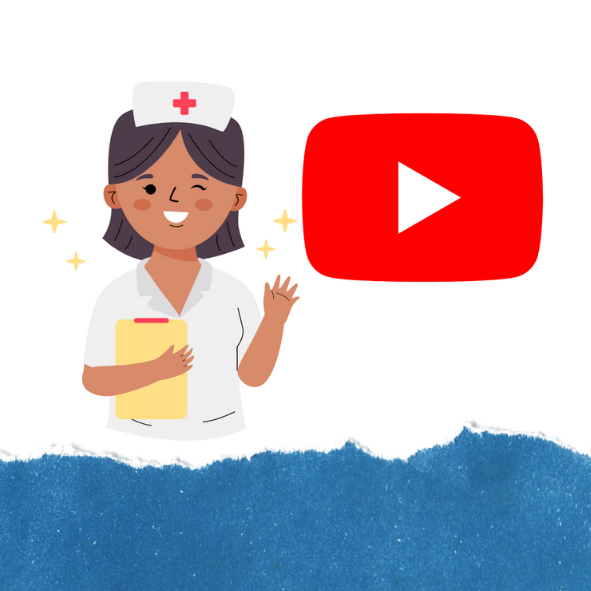“YouTube as my second classroom”: Indonesian nursing students’ self-regulated language learning on YouTube
DOI:
https://doi.org/10.21070/jees.v8i1.1751Keywords:
self-regulated language learning, YouTube videos, nursing students, English for nursing purposesAbstract
This study investigated the independent language learning that Indonesian nursing students did after school on YouTube. Six undergraduate nursing students who have a lot of experience with YouTube viewing and have level of English equal to B1 were asked to participate in a one-on-one interview to discuss their opinions of this selfregulated language learning. A narrative inquiry design was deployed to explore the stories of how learners felt about this technologically mediated language learning and how it affected their language skills. The results show that discovering motivation for learning English, searching for extra learning materials, and potential metacognitive learning styles were the three most popular reasons for studying English on YouTube. Students perceived that learning English on YouTube was more flexible, entertaining, and approachable than traditional classroom instruction. However, this informal education does not promote socialization or an awareness of cultural differences between nations. The findings have made a significant contribution to the future
instructional design of ESP classroom where the integration of YouTube videos may become an alternative for more engaging ESP classroom interaction. Besides, promoting awareness of cultural diversities and appropriate online social interaction need to be considered for YouTube mediated learning activities to help students use the language appropriately within its socio-cultural settings.
HIGHLIGHTS:
- The three most common motivations for nursing students to learn English on YouTube were finding motivation, looking for additional resources, and potential metacognitive learning approaches.
- The integration of YouTube videos may become an alternative for more engaging ESP classroom interaction.
- To assist students utilize the language effectively within its socio-cultural settings, YouTube-mediated learning activities need to take fostering awareness of cultural diversity and acceptable online social interaction into account.
Downloads
References
Azer, S. A., AlKhawajah, N. M., & Alshamlan, Y. A. (2022). Critical evaluation of YouTube videos on colostomy and ileostomy: Can these videos be used as learning resources? Patient Education and Counseling, 105(2), 383–389.
Benson, P. (2016). The discourse of YouTube: Multimodal text in a global context. Routledge.
Carneiro, R., Lefrere, P., Steffens, K., & Underwood, J. (Eds.). (2012). Self-regulated learning in technology enhanced learning environments (Vol. 5). Springer Science & Business Media. https://doi.org/10.1016/J.PEC.2021.05.023
Dornyei, Z. (2007) Research Methods in Applied Linguistics. Oxford: Oxford University Press.
Gourlay, L. (2016). Multimodality, argument and the persistence of written text. In Studies in Writing (Vol. 33, pp. 79–90). doi: 10.1163/9789004312067_006
Hwang, C. C. (2005). Effective EFL education through popular authentic materials. Asian EFL Journal, 7(1), 90-101.
Kalaja, P., Alanen, R., Palviainen, Å., & Dufva, H. (2011). From milk cartons to English roommates: Context and agency in L2 learning beyond the classroom. In Beyond the language classroom (pp. 47-58). Palgrave Macmillan, London.
Kondo, M., Ishikawa, Y., Smith, C., Sakamoto, K., Shimomura, H., & Wada, N. (2012). Mobile assisted language learning in university EFL courses in Japan: Developing attitudes and skills for self-regulated learning. ReCALL, 24(2), 169-187.
Lai, C., & Gu, M. (2011). Self-regulated out-of-class language learning with technology. Computer assisted language learning, 24(4), 317-335.
Mahasneh, D., Shoqirat, N., Singh, C., & Hawks, M. (2021). “From the classroom to Dr. YouTube”: nursing students’ experiences of learning and teaching styles in Jordan. Teaching and Learning in Nursing, 16(1), 5–9. https://doi.org/10.1016/J.TELN.2020.09.008
O’Leary, Z. (2005) Researching Real-world Problems: A Guide to Methods of Inquiry. London: SAGE.
Oxford, R. L. (2015). Expanded perspectives on autonomous learners. Innovation in Language Learning and Teaching, 9(1), 58-71.
Özsaban, A., Bayram, A., & Durgun, H. (2021). Youtube videos as an educational resource for ventrogluteal injection: A content, reliability and quality analysis. Nurse Education Today, 107, 105107. https://doi.org/10.1016/J.NEDT.2021.105107
Reinders, H., & Benson, P. (2017). Research agenda: Language learning beyond the classroom. Language Teaching, 50(4), 561-578.
Sahin Kizil, A., & Savran, Z. (2016). Self-Regulated Learning in the Digital Age: An EFL Perspective. Novitas-ROYAL (Research on Youth and Language), 10(2), 147-158.
Shyr, W. J., & Chen, C. H. (2018). Designing a technology‐enhanced flipped learning system to facilitate students' self‐regulation and performance. Journal of Computer assisted learning, 34(1), 53-62.
Stickler, U., & Emke, M. (2011). Tandem learning in virtual spaces: Supporting non-formal and informal learning in adults. In Beyond the language classroom (pp. 146-160). Palgrave Macmillan, London.
Top 5 YouTube Channels for Nursing Students | Picmonic. (n.d.). Retrieved April 22, 2022, from https://www.picmonic.com/pages/top-5-nursing-youtube-channels-for-2020/
Tu, C. H. (2000). On-line learning migration: From social learning theory to social presence theory in a CMC environment. Journal of network and computer applications, 23(1), 27-37.
Wang, H. chun, & Chen, C. W. yu. (2020). Learning English from YouTubers: English L2 learners’ self-regulated language learning on YouTube. Innovation in Language Learning and Teaching, 14(4), 333–346. https://doi.org/10.1080/17501229.2019.1607356
Winne, P. H., & Hadwin, A. F. (2010). Self-Regulated Learning and Socio-Cognitive Theory. International Encyclopedia of Education, 503–508. https://doi.org/10.1016/B978-0-08-044894-7.00470-X
Zheng, C., Liang, J. C., Yang, Y. F., & Tsai, C. C. (2016). The relationship between Chinese university students' conceptions of language learning and their online self-regulation. System, 57, 66-78.

Published
How to Cite
Issue
Section
License
Copyright (c) 2023 Ahmad Kailani, Didi Suherdi, Pupung Purnawarman

This work is licensed under a Creative Commons Attribution 4.0 International License.







